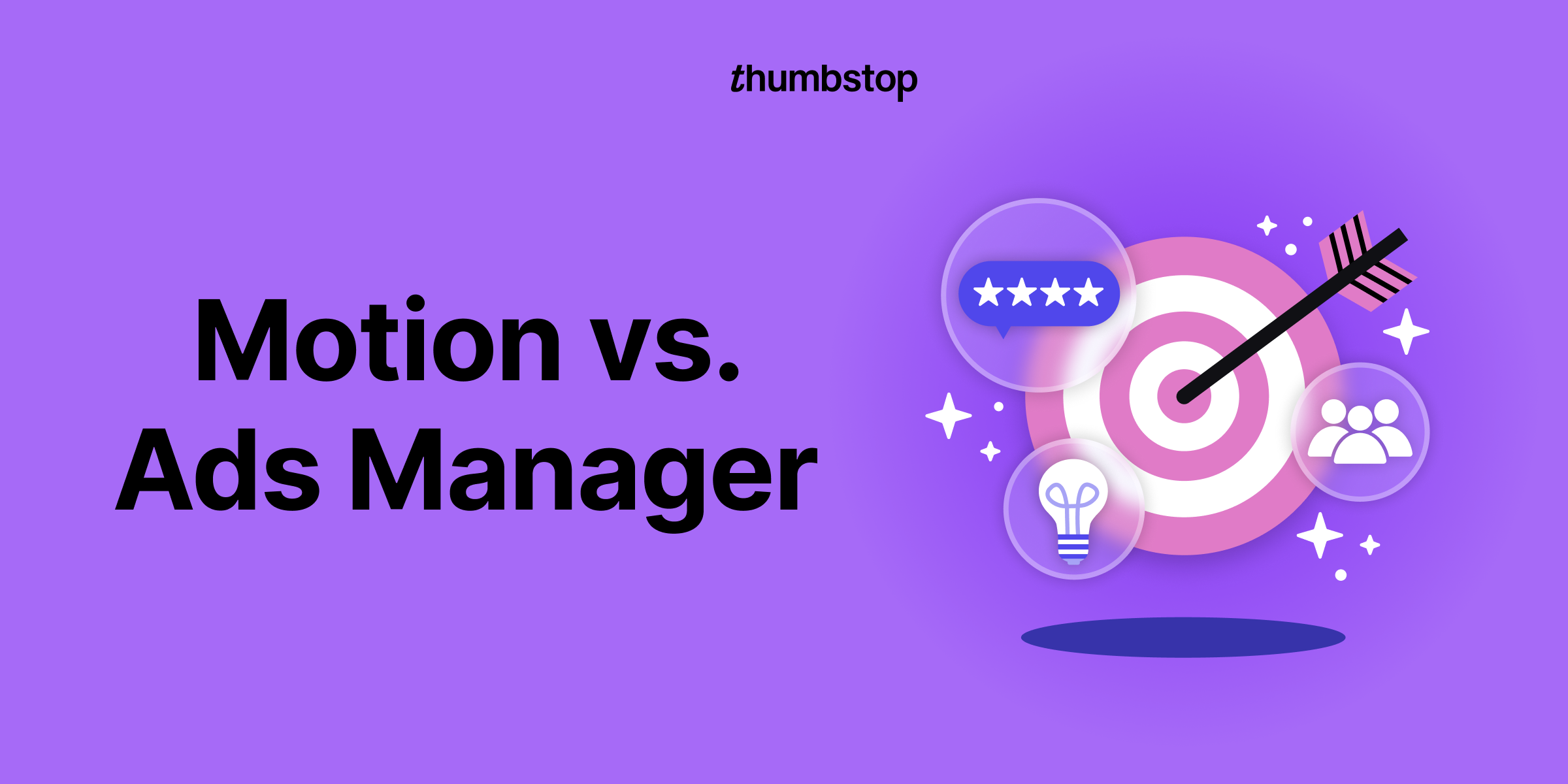The ultimate guide to Facebook ad creative testing in 2025
This blog entry was written by our friends at Ben&Vic, a performance-driven Facebook ads agency.
How to implement creative testing in 2025
Creative testing is no longer optional if you want to create successful Facebook ads in 2025. After being a hot topic throughout 2024, proper testing strategies have become the dividing line between campaigns that scale profitably and those that burn through budgets with little to show for it.
There are still too few advertisers taking a structured approach to testing, but this is crucial if you want reliable results. That's what I want to help you with.
Why creative testing matters more than ever
The Facebook ads landscape has changed dramatically. With rising CPMs and fierce competition for attention, your creative is the #1 factor determining your success.
The methodical testers will pull ahead while casual advertisers fall behind.
The 3-phase testing framework that delivers results
After years of testing thousands of ads for our clients at Ben & Vic Agency, we've developed a framework that consistently identifies winning creatives without wasting budget. This framework breaks down creative testing into three distinct phases:
- Pre-Flight Testing: Which new creative is the best?
- New vs. BAU Testing: Is your new creative better than what's already working?
- Scaling Phase: How to maximize the impact of winning creatives
Let's break down each phase.
Phase 1: Which new creative is best?
The first mistake many advertisers make is testing new creatives against old ones right away. This creates an unfair comparison since older ads have accumulated historical data and pixel optimization that new ads don't have.
Instead, always test new creatives against other new creatives only. Here are 5 scenarios to do this effectively:
Scenario 1: ASC+ campaign
- Create an ASC+ campaign with all your creatives
- Accuracy: ★
- Cost-Efficiency: ★★★
- Best for: Smaller accounts that need to maximize budget efficiency and don't want to overcomplicate testing.
Scenario 2: CBO
- Run a CBO campaign with each ad set containing 1 creative
- Accuracy: ★
- Cost-Efficiency: ★★★
- Best for: Smaller accounts that need to maximize budget efficiency
Scenario 3: ABO (non-CBO) campaign
- Create an ABO campaign with each ad set containing 1 creative concept (+variants)
- Accuracy: ★★
- Cost-Efficiency: ★★
- Best for: Medium-sized accounts that need balance between accuracy and efficiency. ABO will allow you to get quicker results than CBO.
Scenario 4: CBO + variants
- Run a CBO campaign with each ad set containing 1 creative concept (+variants)
- Accuracy: ★
- Cost-Efficiency: ★★★
- Best for: Medium-sized accounts that need balance between accuracy and efficiency. CBO might spend a big share of your budget on a specific ad set. I recommend using rules to turn off overspending ad sets (e.g., after 2 to 3 × the target CPA).
Scenario 5: Cost cap (advanced)
- Create 1 ABO campaign with 1 ad set for each concept and use "cost cap"
- Accuracy: ★★★
- Cost-Efficiency: ★★★
- Best for: Big accounts testing high volumes of creative and spending over $500K/month on Facebook ads.
Phase 2: Is your new creative better than previous winners?
Once you've identified your top-performing new creative, it's time for the real test – can it outperform your best current ad?
This is where many advertisers get discouraged. New creatives need to outperform ads with historical data or at least deliver comparable results to be worth implementing. It's challenging but absolutely worth the effort.
Scenario 1: CBO
- CBO campaign with 2 ad sets, each with 1 creative (old vs. new)
- Accuracy: ★
- Cost-Efficiency: ★★★
- Best for: Efficient testing with limited budgets
Scenario 2: ABO campaign
- ABO campaign with 2 ad sets containing 1 creative each (+variants)
- Accuracy: ★★
- Cost-Efficiency: ★★
- Best for: Medium-budget accounts seeking balance
Scenario 3: Cost cap (advanced)
- 1 ad set with 1 new and 1 old creative, using cost cap
- Accuracy: ★★★
- Cost-Efficiency: ★★★
- Best for: Big accounts testing high volumes of creative and spending over $500K/month on Facebook ads.
Phase 3: Scale what works
When your new creative proves itself by outperforming or matching your existing winners, it's time to scale. This phase is where you'll reap the rewards of your testing:
- Begin scaling immediately once you've validated performance
- Add the new creative to fatigued ad sets to refresh their performance
- Don't pause old creatives – keep them running alongside new ones
- Be patient with CBO and ASC+ campaigns as they may need time to adjust to new creatives
- Maximize performance quickly for the best overall results
Creative production still matters most
While this testing framework will help you identify winners, remember that the quality of what you're testing remains the foundation of success. Using a creative analysis tool (like Motion) is the core of crafting winning creative.
Build your testing flywheel
The most successful Facebook advertisers in 2025 will be those who create a continuous testing flywheel:
- Consistent production of new creative concepts
- Structured testing using the 3-phase framework
- Quick implementation of winners
- Continuous creative learning from both successes and failures
Successful Facebook ad creative testing in 2025
Creative testing shouldn't be random or haphazard. Follow this structured approach consistently, and you'll not only identify winning creatives more reliably, but you'll also develop a deeper understanding of what resonates with your audience.
The Facebook advertising landscape will continue evolving in 2025, but this framework provides a solid foundation that can adapt to whatever changes come our way.
I hope this guide helps you crush your Facebook ad performance in 2025!





.png)


